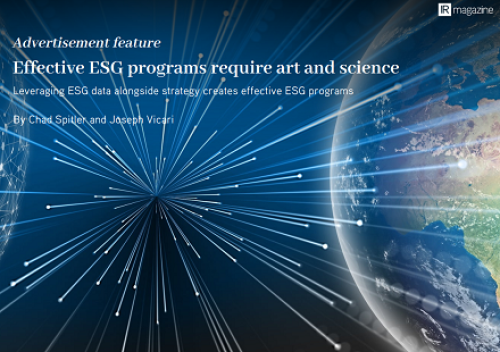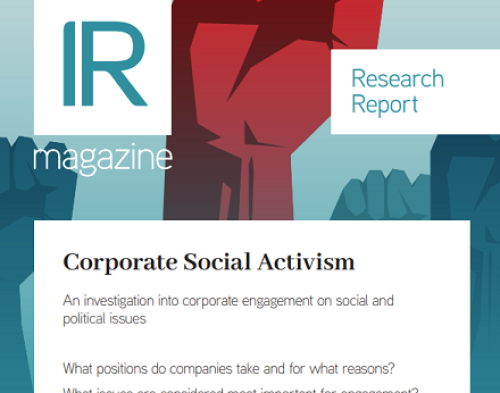Last summer, IR Magazine made its first official trip to Mumbai for the inaugural IR Magazine Forum & Awards – India amid stormy weather and a fittingly tumultuous backdrop, thanks to a changeable period on the country’s capital markets.
A year on and, while the weather was no less unsettled, Indian IR seemed to be standing on more solid ground than it had been 12 months prior. Just a few weeks before the conference, in May 2019, the world’s largest democracy had voted in Narendra Modi for his second straight term as prime minister – this time at the head of a single-party government.
Modi’s last term saw the National Democratic Alliance leader reinvigorate an administration hamstrung by corruption and infighting, passing bold reforms and measures to open up India’s capital markets to foreign investment, slash the fiscal deficit and bring inflation under control. Now, with a single-party government in place, the Modi administration has its sights set on enhancing rural income, increasing employment levels and other reforms, all with the benefit of a smoother policy-making process.
The themes of Modi’s campaign – promising transparency, openness and fiscal responsibility in the capital markets – were returned to throughout a day of discussion panels, roundtable chats and interviews during the course of the India Forum. Introductions from Anand MS, co-founder of the IR Society of India, and Anuj Sonpal, founder and CEO of the IR consultancy Valorem Advisors, touched on many of the reasons to be optimistic about India’s refreshed regime.
Anand spoke passionately about the rise in profile IR has enjoyed in India in recent years, and pointed to the need for professionals from across a spectrum of sectors, industries and cap sizes to collaborate in the name of boosting standards. A move from ‘reactive to proactive’ IR was paramount in this, he noted, as an increasing number of firms engage external IR advisers to bolster their internal efforts.
Sonpal set his sights on the rising importance of ESG investors in India and the need for IR to respond to their requests for more granular corporate information. He also highlighted how crucial trust would be in order to foster collaborative growth in the capital markets, and how IR’s role should be to ‘hold up a mirror’ to corporates. ‘Just like India itself is on a path to new heights, so too investor relations will strive to improve in India,’ he concluded.
The morning’s first panel answered the top question on many an IRO’s mind: how should practices respond to succeed in a changing capital markets environment? Three award-winning IR professionals offered their views on the trends that would shape their jobs in 2019: the increasingly strategic role of IR, making the most out of investor meetings and the ‘whole new level’ of transparency required of corporate communicating, particularly in an increasingly digital landscape.
‘I believe the shortest or quickest way to communicate may not always be the best way,’ noted one panelist, an IRO at a technology company. ‘It’s important to pick media that allow you to set the context and control the messaging you’re bringing across to investors.’ Platforms like WhatsApp and Twitter did not necessarily allow for this context-setting, he concluded.
After a break for chai and coffee – and time to let an audience of more than 120 IROs and communications professionals network – it was time to put an investor under the microscope during a fireside chat with a leading European asset manager. He outlined his firm’s investment thesis, drawing attention to the fact that, though it is based in Hong Kong, India is increasingly seen as a center of sustainable investment for the company.
So how could IROs ensure they communicate in a way that suits investors? According to the asset manager, ‘picking the right material measurements’ to inform their firm’s ESG integration process was key. Picking the right framework for this disclosure – the asset manager mentioned the SASB template as best in class, but also pointed to the Global Reporting Initiative or International Integrated Reporting Council frameworks as good options – was crucial, particularly as many firms were beginning to bring their ESG analysis in-house.
The final session before lunch took a new form: eight tables, each featuring an expert in a different field, were open for IROs to take part in interactive, intimate discussions. Attendees could pick three topics over the course of the hour-long session, ranging from a look at the new corporate governance policies put in place by the Securities and Exchange Board of India and integrated reporting to the best ways to measure success in one’s IR program.
The afternoon kicked off with Ashwin Bajaj, head of IR at Adani Power, quizzing a buy-sider and a sell-sider on their expectations of good corporate communications. Both mentioned the promise of IR in India, but warned about the potential impact of Modi’s new administration, general stock market volatility and the growth of activist investors as potentially complicating factors in their future role.
The sell-sider shared an anecdote that illustrates IR’s progress: in the 1990s, quarterly results would not be sent out to the sell side on time – instead ‘we’d have to drive down to the stock exchange early in the morning, pick up the notes and then type them into a spreadsheet before we could write a research note’, she revealed. Since then, the regulator, capital market players and pioneering IR teams have played a major hand in upping the function’s status.
The afternoon’s final sessions were given over to how IR can meet the needs of a worldwide investment community that is increasingly ESG-focused. First up, Arvind Agrawal, founder and CEO of AICL, walked the audience through examples of how integrated reporting works in practice at companies in India and further afield, given the greater demand from investors for companies to report on material non-financial factors.
Two sessions then examined that ESG best practice from different standpoints in the capital markets. First, a conversation between the managing director at a financial services advisory and Gaurav Kapur, head of India policy at the Association of Certified Chartered Accountants, examined the roles different market forces would play in India’s adoption of ESG investing. At time of writing, there are three Indian funds that are specifically focused on such an investment discipline.
Both panelists agreed that more would shortly follow; the financial advisory director added: ‘I would not be surprised if there were not only more ESG funds in India, but also more mainstream funds focusing on that discipline in the next year.’ For examples of what corporates should do – or not do – to meet the demand, he advised looking at the firms that have been considerably uprated – or downrated – in ESG terms in recent months.
The final session of the day answered the same question in more specific detail: how is IR best positioned to answer the call of the ‘governance’ part of ESG investing in a world of hyper-transparency? Two panelists – one a head of IR at a multinational conglomerate, the other a director of corporate development at a financial technology firm – agreed that IR had a pivotal role in using multiple channels to communicate their firm’s governance policies and strengths. But where IR can really add value is being able to say ‘I goofed up,’ said the head of IR.
‘I have seen the investment community respecting you more for admitting your mistakes, rather than judging you,’ she added, describing both failures of corporate governance and wider strategic problems. She went on to say that fostering strong relationships with the markets is key, as is having protocols in place for when something unexpected occurs.
Kailash Gupta, chief financial officer at Inox Leisure, struck a similar note in his closing keynote speech. He spoke about the importance of forming close relationships with internal and external stakeholders, ensuring the easy flow of communications between them and being flexible when the situation called for it.
With a quick pause to grab a drink – and to begin to digest the day – it was on to the IR Magazine Awards – India 2019, a recognition of the best-performing IR teams in India, as identified by the IR Magazine judging panel’s analysis of more than 130 self-written entries.
Bangalore-based Infosys, a global IT service and consulting company, held onto its best IR team (large cap) trophy from 2018 and gained another for best use of media and technology. But Komal Sharan, head of IR at Barti Airtel, another telecoms company, took the 2019 title for best investor relations officer (large cap), while the Phoenix Mills’ Varun Parwal took home the gong for best investor relations officer (small to mid-cap).
With that – and a toast to eight other award winners – the afternoon gave way to a drinks reception and, more crucially, an opportunity to meet fellow IR decision-makers, market-movers and sell-side shakers.
Valorem's Anuj Sonpal reflected on the successful event, commenting “The 2019 IR Magazine Forum and Awards in India brought stalwarts together to share their experience, knowledge and ideas across various topics impacting IRO’s in India today. From the impact of the recent windfall elections and what can be expected out of the economy and the markets in coming years, to the rise of ESG focussed investing in India. But by far the experience of the round table discussions, which was a new format this time, was the highlight of the day, where participants got to share experiences and learning lessons across various topics of the Investor Relations function. I commend the IR Magazine teams professional management of this event, which has in just its second year become the forum of the year for all IRO’s in India.”










